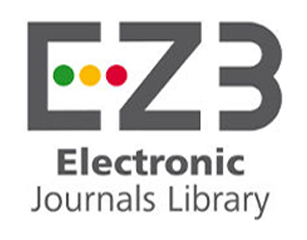ORGANIZATION OF ACTIVITIES OF THE NATIONAL ANTI-CORRUPTION BUREAU OF UKRAINE AND ITS PLACE IN THE SYSTEM OF STATE AUTHORITIES OF UKRAINE
DOI:
https://doi.org/10.32689/2617-2224-2020-4(24)-23-31Keywords:
National Anti-Corruption Bureau of Ukraine, anti-corruption activities, fight against corruption, prevention and counteraction of corruptionAbstract
Corruption has only been perceived as a particularly dangerous socio-political phenomenon in the last three or four decades. Interest in this problem has grown markedly at the turn of the XX–XXI centuries: it was estimated that in the early 1990s the word “corruption” appeared in influential media on average about 500 times a year, and at the beginning of the XXI century, this figure increased dozens of times. This indicates an increasing threat of corruption to the national security of any state. This understanding of this phenomenon has shaped a broad approach to the development of in-depth anti-corruption programs by international organizations and individual developed countries. The first of them had the main purpose of destroying not so many corrupt practices as the kleptocrats themselves. Today, there are a large number of specialized anticorruption institutions in the world, which have organizational and functional features, depending on the national, cultural, legal, and administrative characteristics of each country.
On October 5, 1995, the Law of Ukraine “On Combating Corruption” was adopted. It defines the legal and organizational principles of preventing corruption, detecting and stopping its manifestations, restoring the legal rights and interests of individuals and legal entities, and eliminating the consequences of corruption. The law contains a list of anti-corruption bodies, which include the relevant units of the Ministry of Internal Affairs of Ukraine, the Security Service of Ukraine and the Prosecutor’s Office of Ukraine. In 1998, they were joined by newly created units of the tax police, and in 2003 by the Military Law Enforcement Service in the Armed Forces of Ukraine.
Despite the intensification of the work of law enforcement agencies of Ukraine to combat corruption expansion, the growth rate of the latter could not be stopped. This has led to the perception of Ukraine in the world as a corrupt state with an unfavorable investment climate, the penetration of corruption in most relations between the population and the government, the creation of deep distrust of the state’s ability to ensure constitutionally guaranteed rights and freedoms.
The scale of corruption in the country in the late 1990s and mid-2000s showed that attempts to overcome it in a society with a high level of tolerance to corruption without the creation of a truly independent state body with real powers would be in vain.
References
Закон України “Про Національ- не антикорупційне бюро України” [Електронний ресурс]. Режим до- ступу: https://zakon.rada.gov.ua/ laws/show/1698-18
Козленко В. Г. Адміністративно-пра- вові основи діяльності Національ- ного антикорупційного бюро України: автореф. дис. на здобуття наук. ступеня канд. юрид. наук: спец. 12.00.07 “Адміністративне право і процес; фінансове право; інфор- маційне право”. Дніпропетровськ : ДДУВС, 2016. 22 с.
Войтюк Р. В. Порівняльний аналіз повноважень детектива Національного антикорупційного бюро України та комісара Незалежної антикорупцій- ної комісії Гонконгу [Електронний ресурс] // Наук. вісн. Нац. акад. внутр. справ. 2017. № 1. С. 346–358. Режим доступу: http://www.irbisnbuv. gov.ua/cgi-bin/irbis_nbuv/cgiirbis_64.exe?I21DBN=LINK&P2 1DBN=UJRN&Z21ID=&S21REF=10&S21CNR=20&S21STN=1&S21FMT=ASP_meta&C21COM=S&2_ S21P03=FILA=&2_S21STR=Nvknuvs_2017_1_34
Скомаров О. В. Взаємодія Націо- нального антикорупційного бюро України з іншими державними ор- ганами: особливості та класифікація [Електронний ресурс] // Верховенство права. 2017. № 1. Режим доступу: http://sd-vp.info/2016/vzayemodiya-natsionalnogoantikoruptsijnogo-byuro-ukrayiniz-inshimi-derzhavnimi-organamiosoblivosti- ta-klasifikatsiya/











